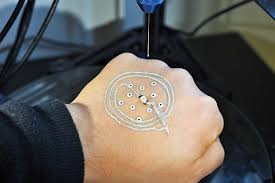
Breaking News
 THIS IS A FIRST FOR ME AND MY HOMESTEAD
THIS IS A FIRST FOR ME AND MY HOMESTEAD
 6 friends, 6 units, 1 lot: each owns their dream home for $800/month
6 friends, 6 units, 1 lot: each owns their dream home for $800/month
 Trump & Putin Meet In Alaska, Melania's Epstein Lawsuit & Netanyahu TROLLS Iran | PBD Podcast 63
Trump & Putin Meet In Alaska, Melania's Epstein Lawsuit & Netanyahu TROLLS Iran | PBD Podcast 63
Top Tech News
 1,000 miles: EV range world record demolished ... by a pickup truck
1,000 miles: EV range world record demolished ... by a pickup truck
 Fermented Stevia Extract Kills Pancreatic Cancer Cells In Lab Tests
Fermented Stevia Extract Kills Pancreatic Cancer Cells In Lab Tests
 3D printing set to slash nuclear plant build times & costs
3D printing set to slash nuclear plant build times & costs
 You can design the wheels for NASA's next moon vehicle with the 'Rock and Roll Challenge
You can design the wheels for NASA's next moon vehicle with the 'Rock and Roll Challenge
 'Robot skin' beats human reflexes, transforms grip with fabric-powered touch
'Robot skin' beats human reflexes, transforms grip with fabric-powered touch
 World's first nuclear fusion plant being built in US to power Microsoft data centers
World's first nuclear fusion plant being built in US to power Microsoft data centers
 The mitochondria are more than just the "powerhouse of the cell" – they initiate immune...
The mitochondria are more than just the "powerhouse of the cell" – they initiate immune...
 Historic Aviation Engine Advance to Unlock Hypersonic Mach 10 Planes
Historic Aviation Engine Advance to Unlock Hypersonic Mach 10 Planes
 OpenAI CEO Sam Altman Pitches Eyeball-Scanning World ID to Bankers
OpenAI CEO Sam Altman Pitches Eyeball-Scanning World ID to Bankers
 New 3D-printed titanium alloy is stronger and cheaper than ever before
New 3D-printed titanium alloy is stronger and cheaper than ever before
3D bioprinter patches up wounds using a patient's own skin cells

To help patch up large wounds that might normally require a skin graft, researchers at Wake Forest Institute for Regenerative Medicine (WFIRM) have developed a new bioprinter that can print dual layers of a patient's own skin directly into a wound.
The idea of 3D printing skin has been in development for a few years. In 2014, a prototype machine was unveiled that could print large sheets of human skin that could then be cut to size and grafted onto a patient. The tech evolved over the years into more detailed machines and eventually a handheld device that works like a tape dispenser for skin.

 I CAN BELIEVE IT'S NOT BUTTER
I CAN BELIEVE IT'S NOT BUTTER


